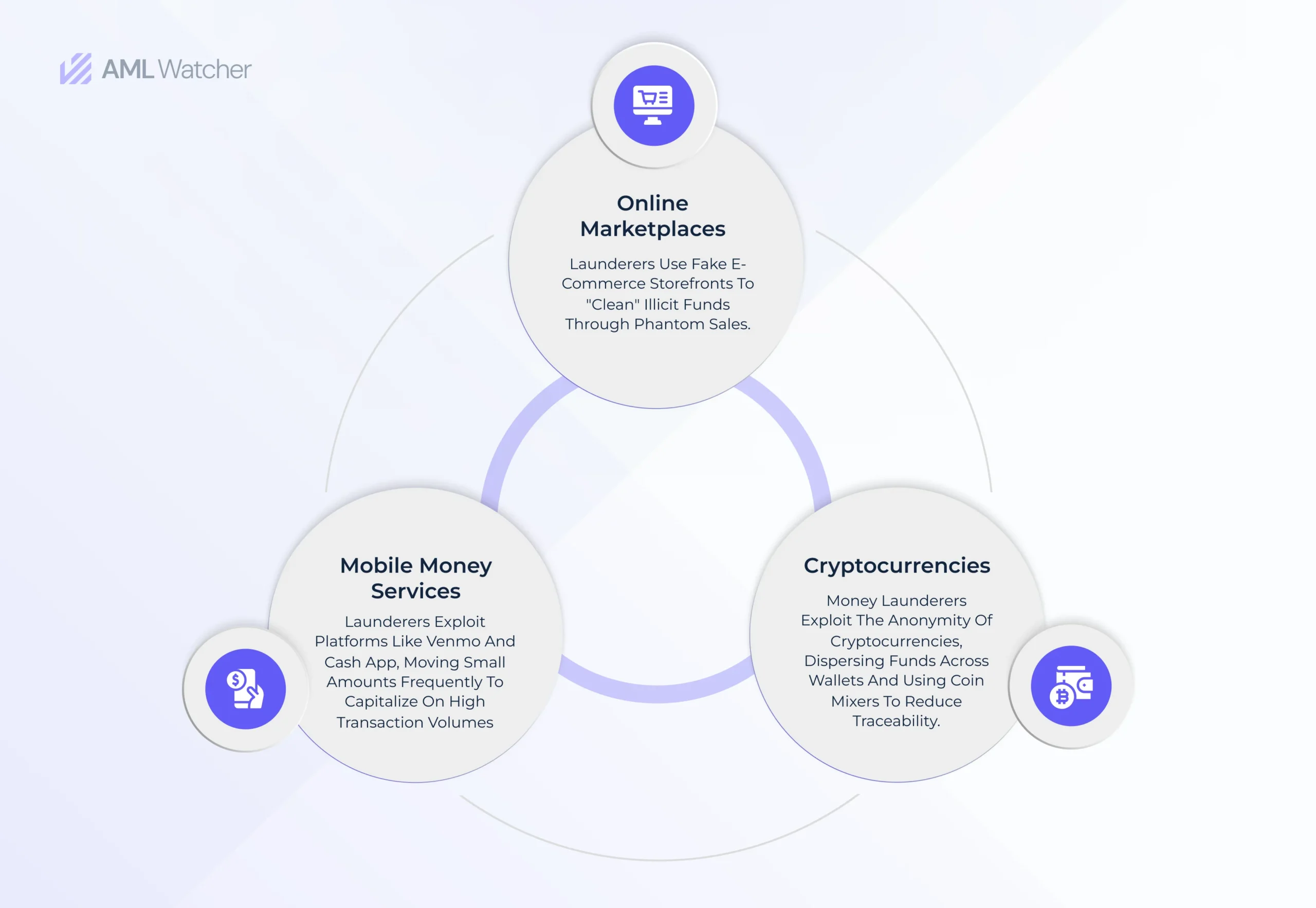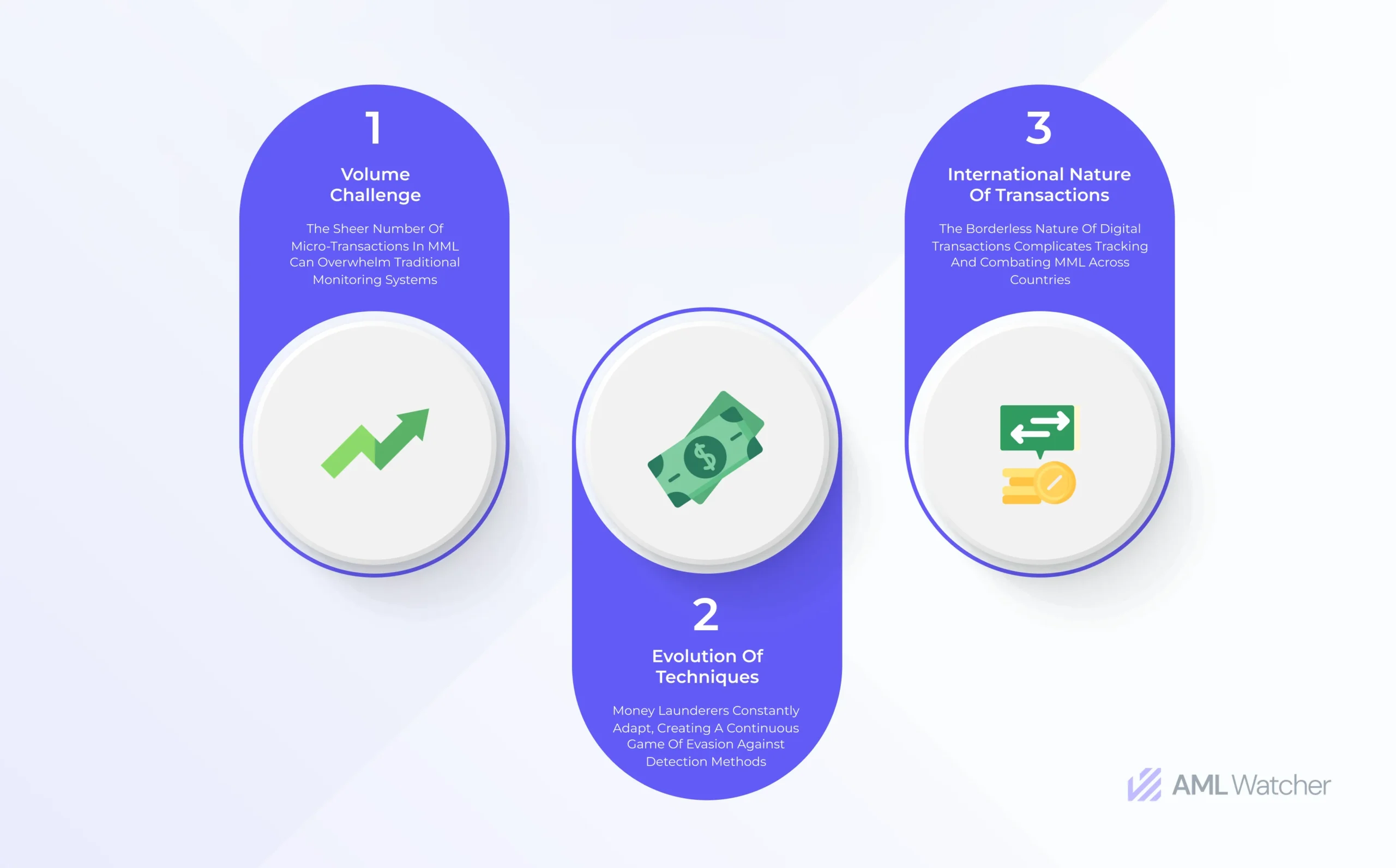
The Emergence of Micro Money Laundering: A 21st Century Phenomenon
Imagine a vast ocean, teeming with fish. Instead of a few giant whales making a splash and drawing attention, there are millions of tiny fish, each carrying a small pebble. Individually, these pebbles seem insignificant. But collectively, they amount to a mountain of stones hidden beneath the waves. This is “micro money laundering.” Instead of laundering large sums of money in one go, which might raise alarms, criminals distribute and move tiny amounts across countless transactions, making it harder to detect crimes, and thus weaken AML compliance.
Understanding the concept of Micro Money Laundering
The process of moving large amounts of illegal or dirty money through many small transactions confines the term “micro-money laundering”. Moving large amounts of money in one raises a lot of suspicion, thus smart ways to undergo money laundering constitute moving money via small transactions to make the transactions look less suspicious. The method necessitates the need for a more precise and smart screening mechanism in order to catch frauds that occur via online marketplaces & digital wallets.
Why the Shift Towards MML?
Although cash transactions are the primary source of money laundering, the digital transformation of finance has emerged as another reason behind the evolving landscape of financial crimes. As digital payments and online marketplaces are booming, transaction monitoring has also become unavoidable. AML transaction monitoring is essential to detect suspicious activities on these platforms. Traditional money laundering methods, involving large sums, are more likely to raise red flags, especially with real-time transaction monitoring in place. Conversely, smaller transactions, if not subjected to appropriate transaction monitoring rules, often bypass regulatory radars.
Popular Techniques Employed in MML
Online Marketplaces:
With the evolution of e-commerce platforms like eBay or Amazon, money launderers have adapted their techniques to this digital age. They establish faux storefronts, acting as fake vendors. By selling phantom or overpriced products and making purchases from themselves, these launderers cleverly “clean” illicit funds, transforming them into seemingly legitimate earnings, depicting a lack of ongoing monitoring.
AML Concern: This method often goes undetected because it blends with the colossal volume of genuine transactions. However, sophisticated AML transaction monitoring systems can flag unusual patterns or recurring transactions between specific buyer-seller pairs. By analyzing customer transaction history, signs of MML can be identified.
Cryptocurrencies:
The decentralized and often anonymous nature of cryptocurrencies provides an attractive avenue for money launderers. They disperse illicit funds across multiple digital wallets. Additionally, they employ coin mixers — services that split and mix different cryptocurrency transactions to obscure their origins — ensuring the traceability of the funds is vastly reduced.
AML Concern: The rise of cryptocurrencies presents a challenge to traditional transaction monitoring rules. Real-time transaction monitoring is pivotal to tracking the swift transfers and conversions inherent in digital currency platforms. Automated transaction monitoring systems that can adapt to the fast-paced nature of cryptocurrency transfers are vital in detecting suspicious patterns or activities. The Travel Rule mandates cryptocurrency service providers to gather and share transaction parties’ details. This means that dispersing funds across multiple wallets or using coin mixers becomes more traceable, as providers must log sender and receiver information.
Mobile Money Services:
Description: Platforms like Venmo and Cash App have revolutionized the way people handle money, promoting the ease of micro-transfers. While convenient for users, this shift has been exploited by money launderers. Small amounts, which often bypass traditional detection thresholds, are moved frequently, capitalizing on the sheer volume of transactions.
AML Concern: Due to the rapid and numerous microtransfers, risk-based transaction monitoring becomes essential. Institutions must identify high-risk accounts or behaviors and subject them to more stringent or continuous transaction monitoring. This ensures that even minor yet suspicious activities are flagged for review.
A Case Study of Micro Money Laundering:
HSBC’s Money Laundering Scandal: Unmasking the MML Technique
As per a famous controversy in 2012, HSBC, which is recognized as a global banking leader was fined $1.9 billion in charge of neglecting US regulations of preventive measures of money laundering.
By using a method known as “smurfing“, reports suggest that Mexican drug cartels leveraged HSBC accounts, executing a series of small deposits in the U.S. to fly under the radar. These inconspicuous deposits, in aggregation, represented billions in illicit funds. Among the myriad of money laundering strategies in the HSBC saga, “smurfing” stood out as a primary tactic to discreetly channel money. This case also underscores the critical importance of adverse media screening in identifying and mitigating such financial risks.
Challenges in Detecting and Curbing MML
Volume: The most apparent challenge in dealing with MML is the sheer volume of micro-transactions involved. Money launderers intentionally engage in numerous small transactions to obfuscate the trail of illicit funds. These transactions can easily overwhelm traditional transaction monitoring systems designed to handle fewer, larger transactions.
Evolution: Money launderers are highly adaptable. As regulators and financial institutions develop and refine transaction monitoring rules and anti-money laundering (AML) frameworks, launderers constantly innovate new techniques. This dynamic creates a perpetual game of cat and mouse, where the criminals evolve to circumvent detection methods.
International Nature: Digital transactions can happen from anywhere, towards anywhere at any time of the day, making it difficult for compliance regulators to keep track of combat micro money laundering. Money launderers can exploit this international dimension to move funds across various countries.
Top Ways to Manage Micro Money Laundering
- Using Advanced Intelligent Algorithms – helps in combating the challenge of managing micro-level transactions of dirty money. By deploying intuitive technology, financial institutions can succeed with closely examining large numbers of transactions in real-time by depicting patterns and leveraging intelligent power to detect and raise suspicious activity reports (SARs) minimizing manual workload for MLROs.
- Combat Money Laundering in Digital Transactions – by upgrading your AML controls from traditional to modern which can facilitate collaboration among human intelligence and AI capabilities. As digital transactions are no longer confined within a boundary, this challenge necessitates the use of the latest technology and resources to both, counter risks and educate the masses about strategic controls.
- Customer Identification Program – is also one of its one-of-a-kind solutions to combat MML by verifying the identity of subjects by screening their name for AML checks to determine the real-time risk score of an individual. By maintaining a complete track of customer information, risks can be flagged before they damage the business’s reputation.
Conclusively, AML Watcher acknowledges the challenges of combating money laundering thus positioning itself as a solution provider to combat micro money laundering and associated risks.
For more insight and assistance, feel free to contact us.
We are here to consult you
Switch to AML Watcher today and reduce your current AML cost by 50% - no questions asked.
- Find right product and pricing for your business
- Get your current solution provider audit & minimise your changeover risk
- Gain expert insights with quick response time to your queries




